Kingdom Fungi Class Agaricomycetes Rank Species | Division Basidiomycota Order Agaricales | |
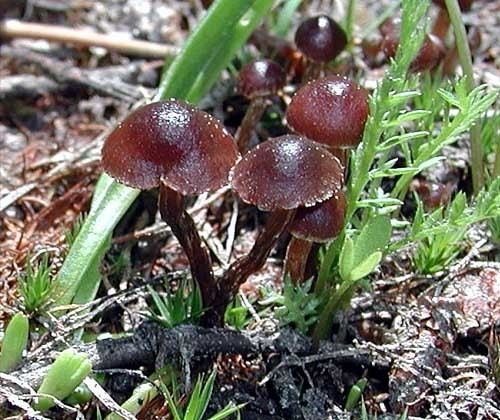 | ||
Similar Deconica, Deconica inquilina, Deconica coprophila, Psilocybe crobula, Psilocybe merdaria | ||
Deconica montana, commonly known as the mountain moss Psilocybe, is a common species of mushroom that is usually found growing in mossy areas, often in montane regions around the world. The appearance is that of a typical "little brown mushroom"—with a small, brown cap and a straight, thin stipe, growing separately or in clumps with others.
Contents
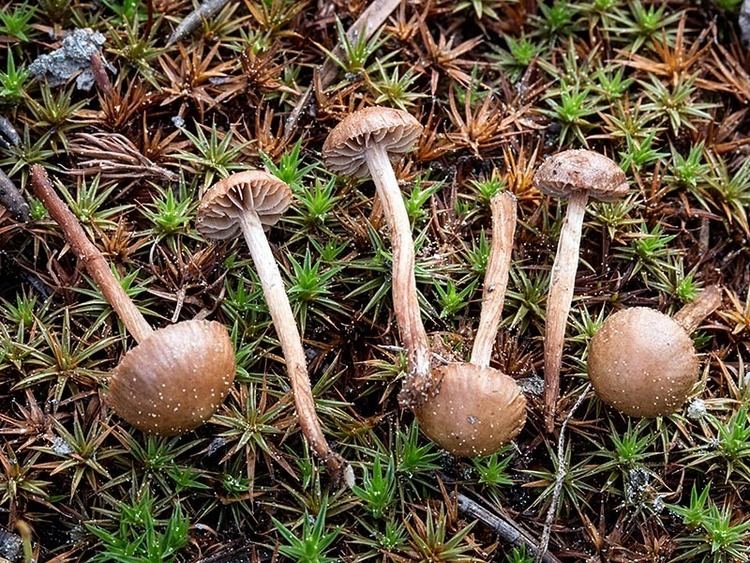
Taxonomy
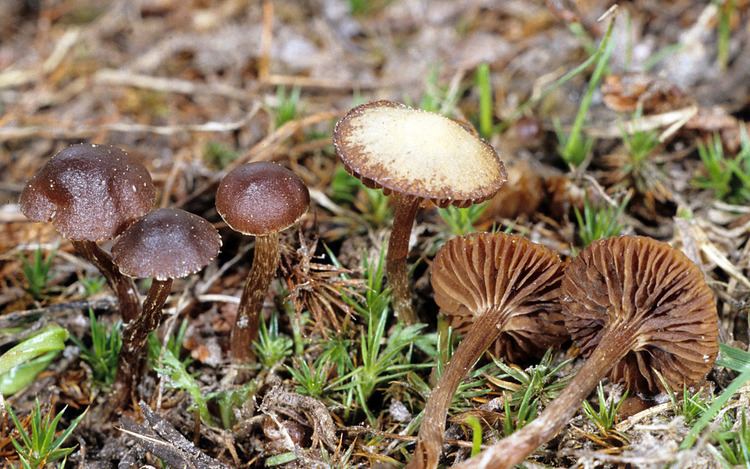
Psilocybe montana was formerly the type species of the mushroom genus Psilocybe. Because it does not contain hallucinogenic tryptamine derivatives like psilocybin or psilocin, it does not stain blue when handled, unlike other typical hallucinogenic members of this genus. Molecular studies in the late 2000s revealed that the genus was polyphyletic and consisted of two distinct clades separating the blueing species from the non-blueing species. However, dividing the genus would be problematic as the name Psilocybe was attached to P. montana and consequently to the non-blueing clade, leaving the hallucinogenic species without a generic name. Because the name is widely associated with the hallucinogenic species and considering the potential legal ramifications of changing their generic name, a proposal was made to conserve the name Psilocybe with P. semilanceata as the type. This left Deconica available as a name for the non-blueing species. The proposal was unanimously accepted by the Nomenclature Committee for Fungi in 2009.
Description
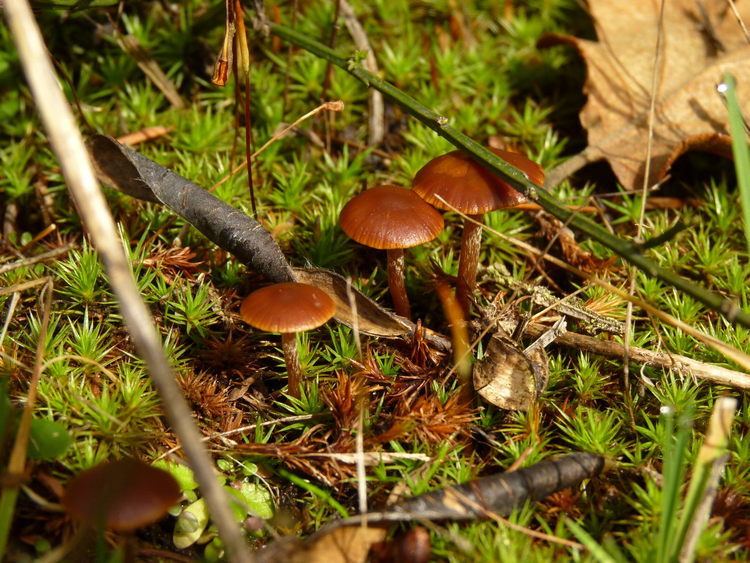
The cap is 0.5–1.5 cm in diameter, initially convex in shape but flattening in age, sometimes with a broad umbo. The cap is moist, glabrous, hygrophanous, and has radial striations to the center; the color is brown to dark-brown. The gills are adnate to broadly adnate or sometimes very shortly decurrent, and of the same color as the cap. The stipe is 1.5–4 cm long, 1–2 mm thick, smooth, the same color as the cap, and brittle. Spores are typically 7.5–10 × 6–8 × 5–5.5 µm and ovate–lentiform in shape with a thickened wall. A large spored variety (spore dimensions of 8.5–11 × 6.0–8.5 × 5.0–7.0 µm), Psilocybe montana var. macrospora Noordel. & Verduin (1999), has also been reported from the Netherlands. The spore print is dark greyish brown.
Habitat
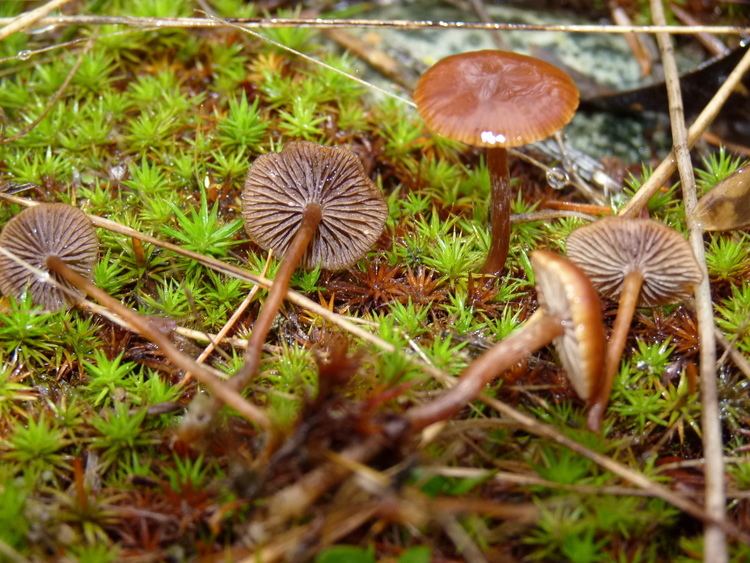
Deconica montana is saprobic, possibly also parasitic. It is often associated with mosses such as Brachythecium albicans, B. mutabulum, Campylopus introflexus, Ceratodon purpureus, Dicranum scoparium, Eurhynchium hians, E. praelongum, E. speciosum, Rhacomitrium canescens, Pohlia species or Polytrichum piliferum. It is commonly found in exposed situations such as dune-meadows, heaths and tree-less tundra, and open Pinus forests, usually on nutrient-poor, well-drained soil.
Distribution
The species has a worldwide, almost cosmopolitan distribution and has been reported from a variety of regions in a wide range of climates, including:
They have also been reported growing in Chemnitz, Germany, on vegetation-covered flat roofs.
